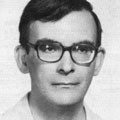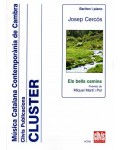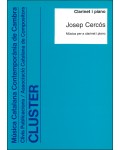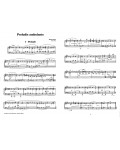
No products
Prices are tax included
Product successfully added to your shopping cart
There are 0 items in your cart. There is 1 item in your cart.
- English
- Castellano
- Català
Josep Cercós i Fransí (Barcelona 1925-1989) is not a composer who can be easily pigeonholed. The devout aversion he felt towards being linked to an ‘-ism’ of any kind, combined with a demanding sense of self-criticism, mark his work deeply. In turn, his work is the victim of its composer’s incisive and radical performances throughout his aesthetic development. This process of development, which Cercós began with a clearly Germanic post-romantic style – Simfonia n. 1 (1st Symphony, 1942), Simfonia n. 2 (2nd Symphony, 1946) – when still in his youth, would mature, after studying under R. Lamote de Grignon and, in particular, due to the knowledge of European trends afforded him by C. Taltabull, into an individual neo-classicism – Preludi, recitatiu i fuga (Prelude, recitative and fugue, 1947-1949), Sonata (1952) – where his unique sense of harmony, not without a certain echo of the works of P. Hindemith, became evident. Later, after a short time in Geneva and studying under L. Nono and H. Scherchen in Gravessano, Cercós began the phase which most came to characterise his work, with the first performance in 1960 of Continuïtats (Continuities) – now sadly lost. This period stands apart from others in his life for his tireless will to experiment and speculate and for his complete independence from criteria, renouncing any commitment whatsoever to “actualism”, which would see him range from clearly experimental works - S 24 (1960) – passing through moments that represent a pure search for method – Conjunt per a 7 instruments (Pieces for 7 instruments, 1963) – and experimentation with serialism – Octet (1968-1969) – to the highly personal language of the two Gloses per a violoncel i piano (Verses for cello and piano, 1972). Cercós’ development culminated in the 80s, which, despite his failing health, were his most productive years and saw a change in direction that would synthesise the different stages of the composer’s life. This synthesis began with 2 Retaules (2 Altarpieces, 1983), a highly counterpointed piece still closely linked to his more recent works, while the Concert per a violoncel i orquestra (Concerto for cello and orchestra, 1983) and the Concert per a viola i orquestra (Concerto for viola and orchestra, 1985) saw an unmistakeable return to his earliest phases. He was also to revamp his first two symphonies, compose a Passacaglia for organ (1989) and complete a cycle of 16 songs for baritone and piano – Els bells camins (The beautiful paths, 1988-1989) – based on the poetry of M. Martí i Pol.
Within this overview of the aesthetic evolution, there is a genre that takes on significant relevance, the genre of song. Many of the languages and styles quoted in the life story of Cercós manifest themselves in such a way that allows us to trace a complete route – from his very earliest years – based solely on his vocal work. In the latter part of his life, he returned to the concert song, or lied, with Els Bells Camins (1988-89). This song cycle, together with his Passacaglia for organ is, in fact, his musical legacy. For this, he selected the most popular and widely read poet of recent years in Catalonia, Miquel Martí i Pol (1929-2003). A poet who started from an attitude of strong social commitment and who, since 1970, due to multiple sclerosis which meant that he had to shut himself away, began a process of introspection and meditation regarding his limitations transcending the extent of his illness, focusing on the expression of more human sensations, such as love, desire and death, always with a strong autobiographical slant.
-
Els bells camins
Edition: DigitalIn Els Bells Camins, we find ourselves before a serene yet passionate love song that Cercós, demonstrating his great compositional ability, translates into music that is difficult to define.
14,98 € -
-
Música per a clarinet i piano
Edition: DigitalMúsica per a clarinet i piano (Music for clarinet and piano) is written in a bold, daring style, in three parts with a free formal structure.
10,03 € -
Música per a clarinet i piano
Edition: PrintedMúsica per a clarinet i piano (Music for clarinet and piano) is written in a bold, daring style, in three parts with a free formal structure.
17,24 € -
Preludis ambulants
Edition: DigitalIn this work highlights some of the most characteristic stylistic features of the author.
10,03 € -








